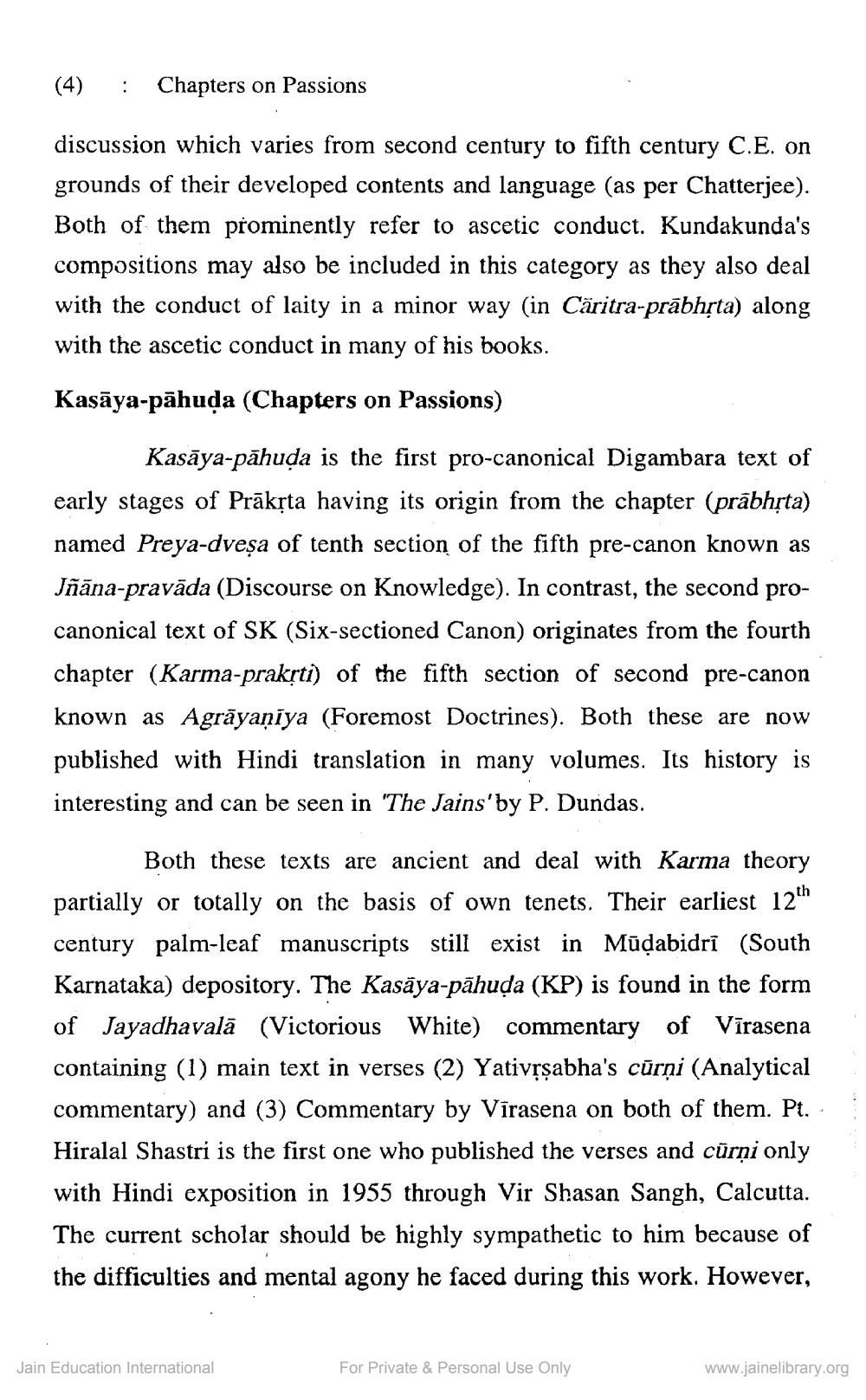________________
(4)
:
Chapters on Passions
discussion which varies from second century to fifth century C.E. on grounds of their developed contents and language (as per Chatterjee). Both of them prominently refer to ascetic conduct. Kundakunda's compositions may also be included in this category as they also deal with the conduct of laity in a minor way in Cäritra-prābhsta) along with the ascetic conduct in many of his books.
Kasāya-pāhuda (Chapters on Passions)
Kasāya-pāhuda is the first pro-canonical Digambara text of early stages of Prāksta having its origin from the chapter (prābhrta) named Preya-dveşa of tenth section of the fifth pre-canon known as Jñāna-pravāda (Discourse on Knowledge). In contrast, the second procanonical text of SK (Six-sectioned Canon) originates from the fourth chapter (Karma-prakrti) of the fifth section of second pre-canon known as Agrāyaniya (Foremost Doctrines). Both these are now published with Hindi translation in many volumes. Its history is interesting and can be seen in 'The Jains'by P. Dundas.
Both these texts are ancient and deal with Karma theory partially or totally on the basis of own tenets. Their earliest 12 h century palm-leaf manuscripts still exist in Müdabidri (South Karnataka) depository. The Kasāya-pähuļa (KP) is found in the form of Jayadhavalā (Victorious White) commentary of Vīrasena containing (1) main text in verses (2) Yativrṣabha's cūrņi (Analytical commentary) and (3) Commentary by Vīrasena on both of them. Pt. Hiralal Shastri is the first one who published the verses and cūrņi only with Hindi exposition in 1955 through Vir Shasan Sangh, Calcutta. The current scholar should be highly sympathetic to him because of the difficulties and mental agony he faced during this work. However,
Jain Education International
For Private & Personal Use Only
www.jainelibrary.org




